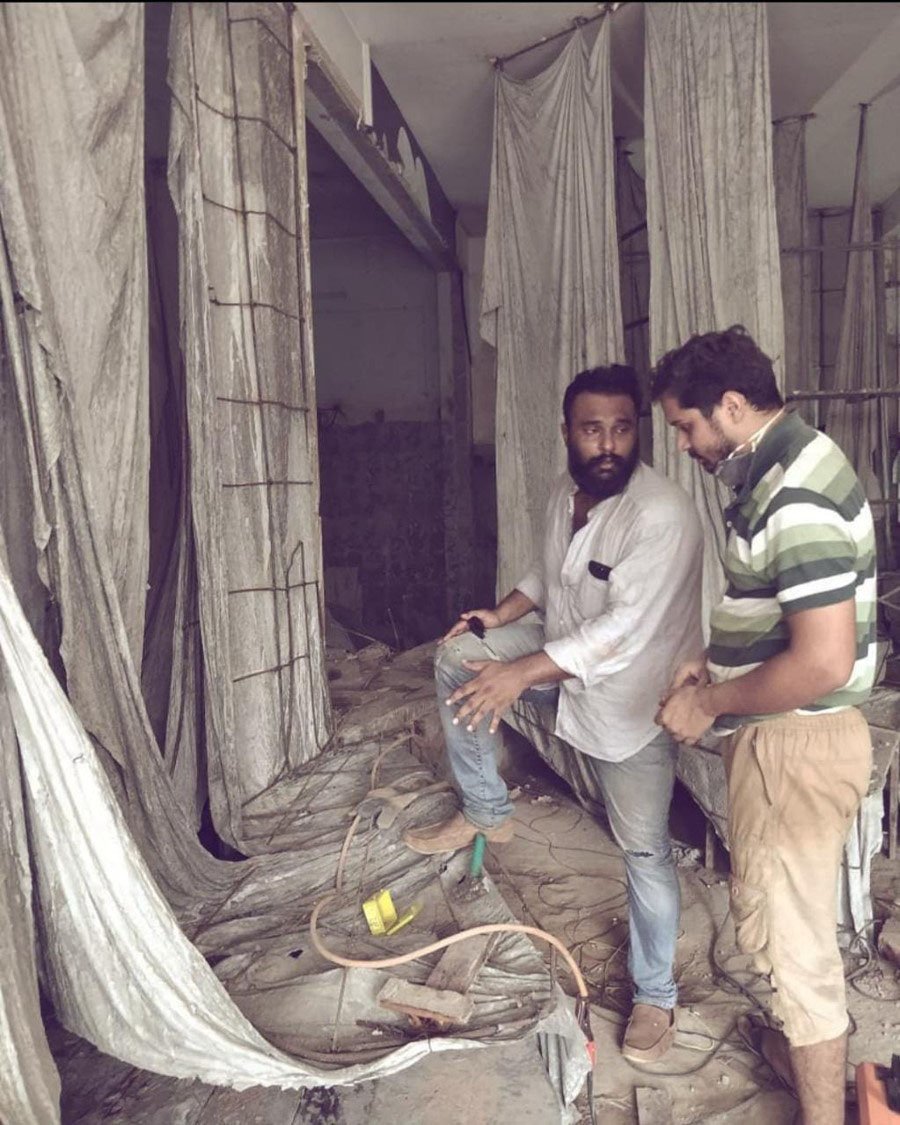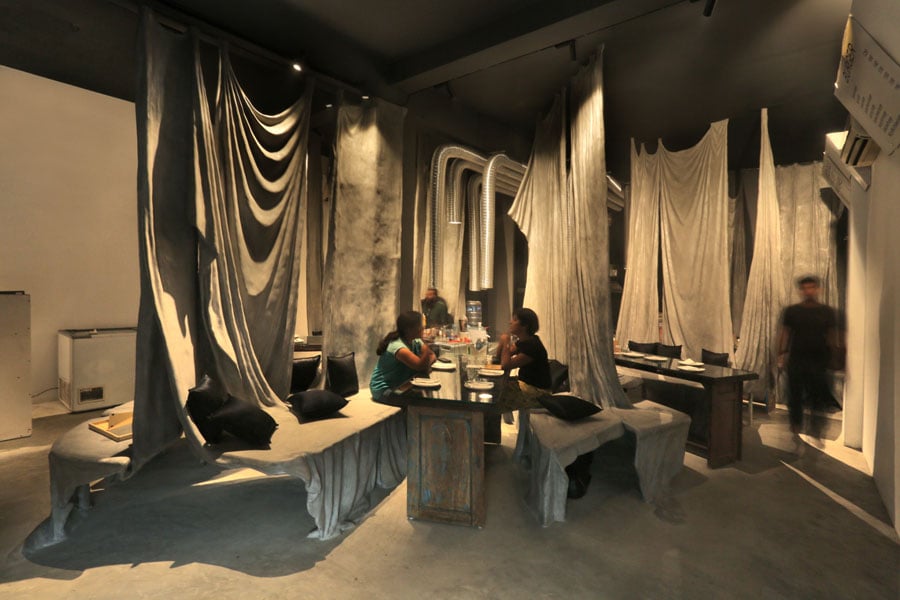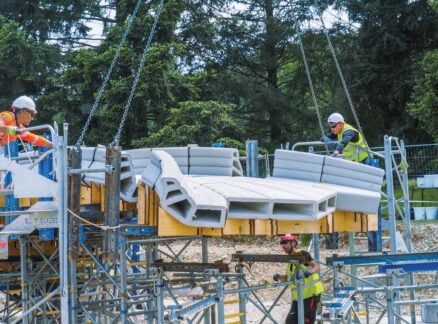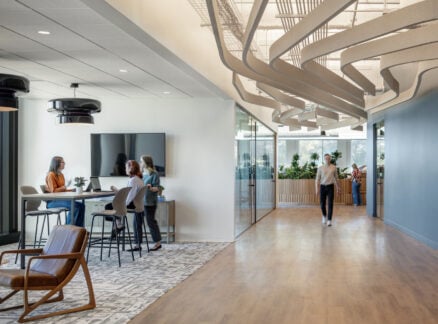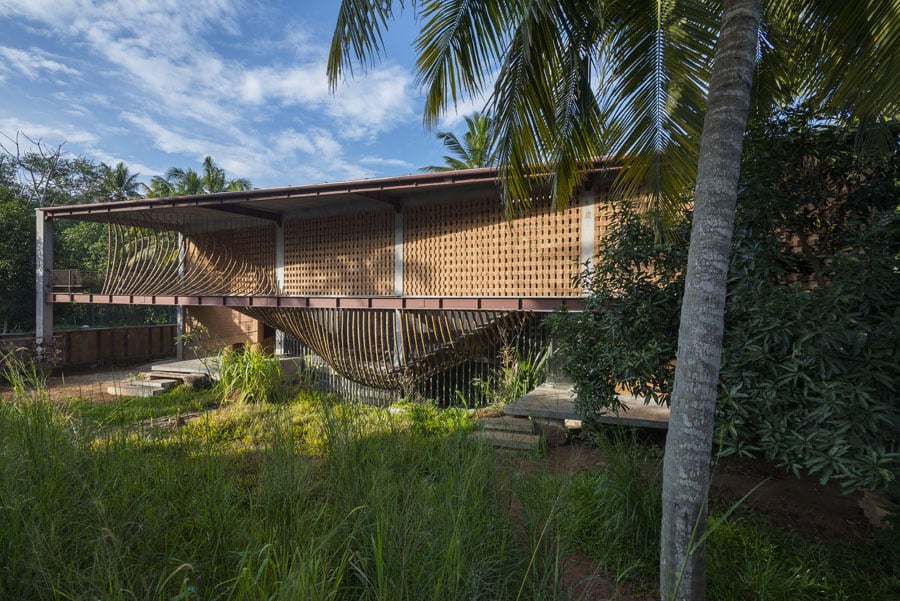
May 28, 2021
Q&A: Vinu Daniel on Building with Mud, Brick, and Waste
Making use of readily available resources, the Indian architect advocates for the value of earth and waste as building materials.

Vinu Daniel, the founder of “vagabond” architecture firm Wallmakers, makes poetic structures out of brick and mud. An engineer at heart, Daniel has a deep commitment to low-cost and eco-sensitive building that has steadily disrupted misconceptions around mud as a building material since establishing his studio in 2007. After completing his B. Arch at India’s College of Engineering Trivandrum in 2005, Daniels worked with Auroville Earth Institute for the United Nations Development Programme on post-tsunami construction. In the past few years, his work has gained acclaim for his innovative use of upcycled and scrap materials.
On a warm, rainy evening, Daniel logs in from his phone to speak with Metropolis over Zoom. He is oddly comfortable in his current office—a cluttered desk amongst the brick and mortar of his latest site on the outskirts of the city of Bengaluru in India.
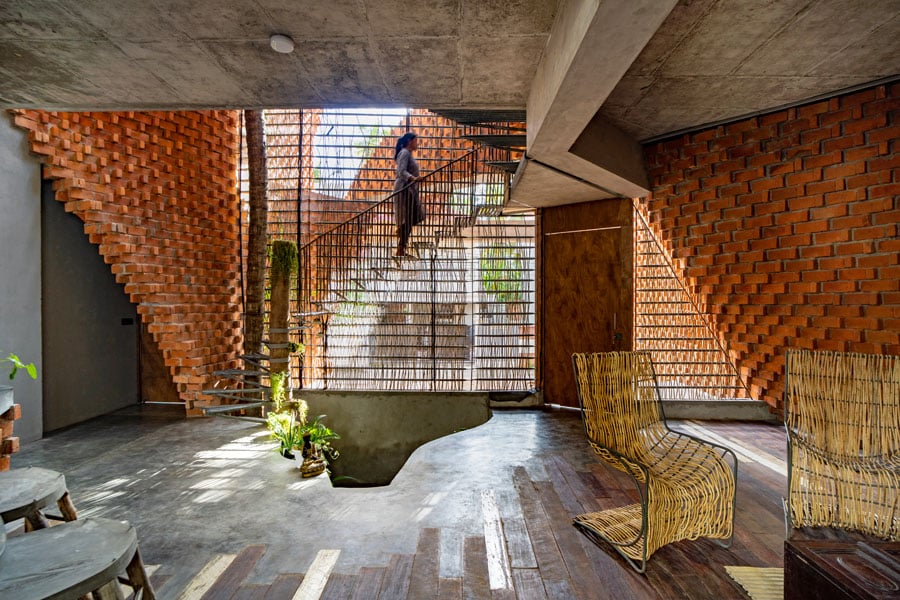
Wallmakers is a curious name for a practice. You also call yourself a “vagabond architect.” What is the story there?
When I started my practice about 15 years ago, fresh out of architecture school, it was with a mixture of cynicism and a spirit for experimentation. On one hand, the Eurocentric curriculum and methodology of teaching had failed to inspire me, and on the other, I had become enthralled by the possibilities of mud architecture, Laurie Baker’s building ethos specifically. With his principles guiding me, I set out to find my own ways of building with earth. Because of my insistence on building with the earth, I was inadvertently limited to building compound walls and flower troughs—there is little faith in mud’s structural stability and longevity—and I was named a ‘wallmaker’ as a slight, which I ended up embracing. Over time, I became devoted to not just using mud but also waste. Abundantly available and continuously created on any site, waste when viewed as a resource, opened up enormous possibilities. As for being a ‘vagabond architect’, this is true indeed, I do not have a permanent office address. We ‘hijack’ and occupy the largest surface we can find on our current site and call it our office.
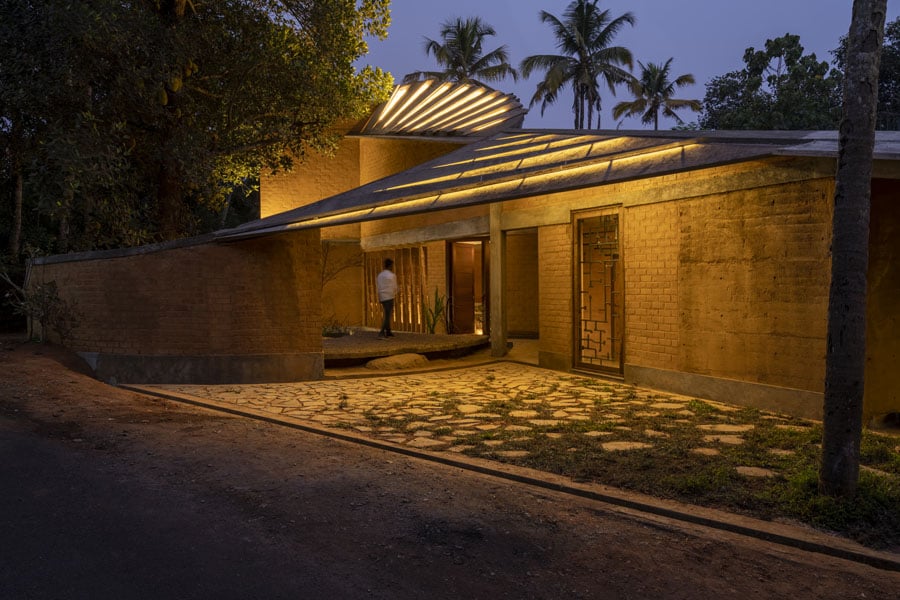
What do you mean when you say “waste” and “earth”? What kind of challenges do you face with these materials?
I don’t think people really take sustainability and climate change seriously, especially people in power—treating waste as a legitimate material with its own properties feels like an architect’s responsibility to me. People have an antagonizing way of looking at waste; it is created carelessly and excessively, and then best kept out of sight, a trait that is exacerbated in the urban setting. If I am to follow Laurie Baker’s five-mile radius principle and restrict sourcing my building materials to that number, I also require a plan for this waste material, which spans from beer bottles and rubber tires to plastic and metal scrap. Each site ends up having a story of its own—I like to call it a confession—and demands its own set of research and experimentation. We perform experiments either on-site or at times in civil engineering labs in nearby schools.
As for earth, mud as a material has a terrible reputation; one of being structurally unsound, and susceptible to be washed away in the rains. Most of these misconceptions were propagated and encouraged by cement manufacturers and real estate developers, for obvious reasons. Taking from indigenous building practices, we successfully challenge these unfounded notions and build mud structures that are not only stable and water-resistant but also climate-responsive, thermally comfortable, low cost, low maintenance, truly local, and poetic.
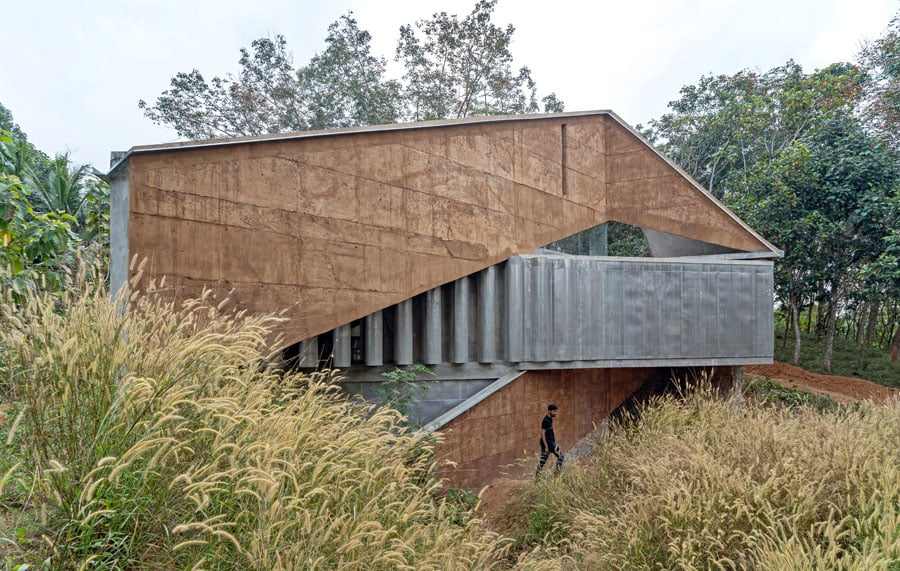
What about your cultural background and upbringing has informed your radical way of looking at and treating waste?
I was born in Abu-Dhabi and growing up my father forbade any kind of hierarchical sensibilities (of race, nationality, caste, religion, color, gender, class) with an iron fist. Abu-Dhabi is a dry desert and land that witnesses both luxurious opulence and stark depravity. I hence knew the value of shade at a very young age and witnessed extravagance and excessive wastage as well. At the age of 17, I moved to Kerala, India to attend architecture school where I was adopted by a family of three matriarchs who were socialists, feminists, and had been freedom fighters pre-1947. On a typical day on returning from college, I would be asked, “What you’re studying, will it serve people in some way?” When one is brought up with powerful personalities who hold humanitarian values at their core, self-serving questions stop dictating your life’s decisions and your focus begins to shift to your role in the world. Perhaps my principles have been deeply influenced by these circumstances and role models, and hence have compelled me to subscribe to Gandhian philosophy, which Laurie Baker was a staunch follower of as well.

What is your relationship with the people who build your buildings? With all your in-situ experiments and techniques, how do you train and accommodate the expectations of on-ground workers?
Very often, I manually handle the mud on site, I work with my hands—I think there is great pleasure in that, and one begins to understand material on a whole new level. I have noticed that once the workers witness that, they have a newfound respect for me. It breaks these very rigid hierarchies of labor that exist on architecture sites, and in the Indian context, also of caste-based aggregations (a plague that continues to rip at the fabric of Indian society.) I am then no longer the stranger who gives them sheets of paper but someone who isn’t afraid to get his hands dirty and in fact seems to enjoy it.
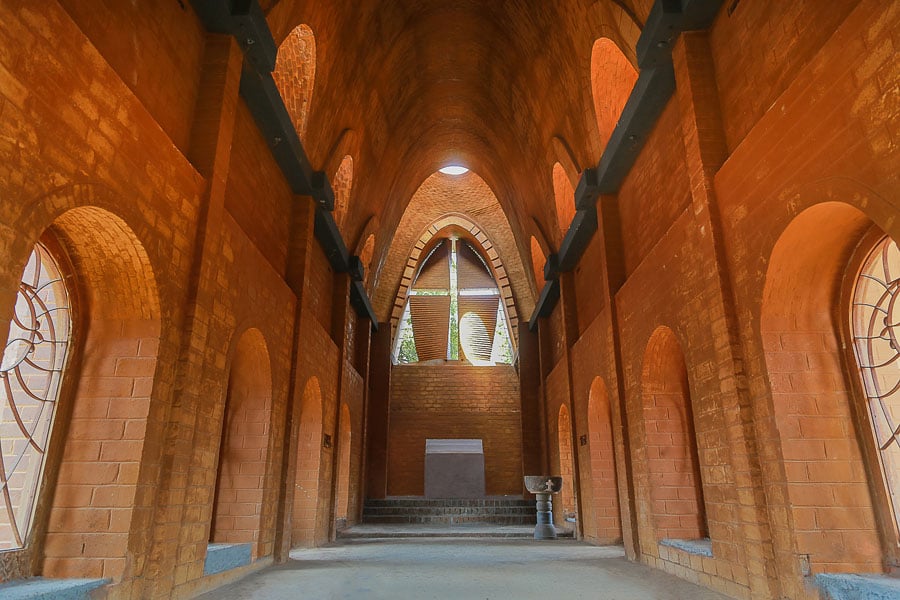
Do you find yourself saying no to a lot of projects?
[Laughs] All the time. I am currently trying to reduce my practice, focus on expansive projects where I get the time to really explore the site and the enormous promises it holds. I am constantly asking the site and myself ‘can you manage this with lesser material?’ Working this way takes a certain amount of faith, commitment, time, and rigor; not only from me but also from the client. There are people who would like me to build for them because they like how my buildings look in pictures but are so removed from what informs my practice, that we would be a terrible match! My clients need to be able to walk the risky path with me and align with the goals of creating delightful spaces in truly sustainable ways.
You may also enjoy “LikeMindedObjects Uses Waste to Create Sustainable Products with Personality”
Would you like to comment on this article? Send your thoughts to: [email protected]
Register here for Metropolis’s Think Tank Thursdays and hear what leading firms across North America are thinking and working on today.
Recent Viewpoints
Viewpoints
How to Design Better with Sound



